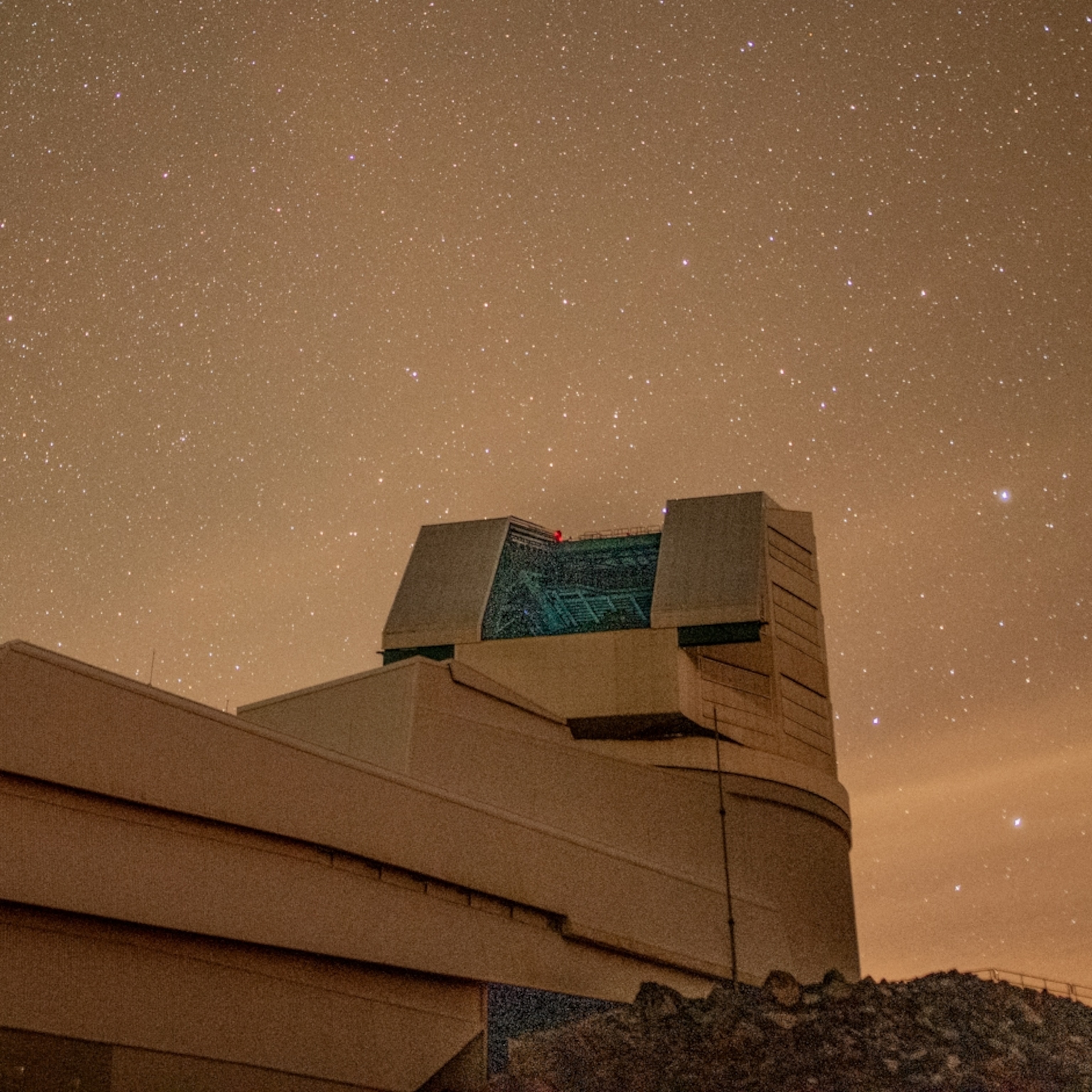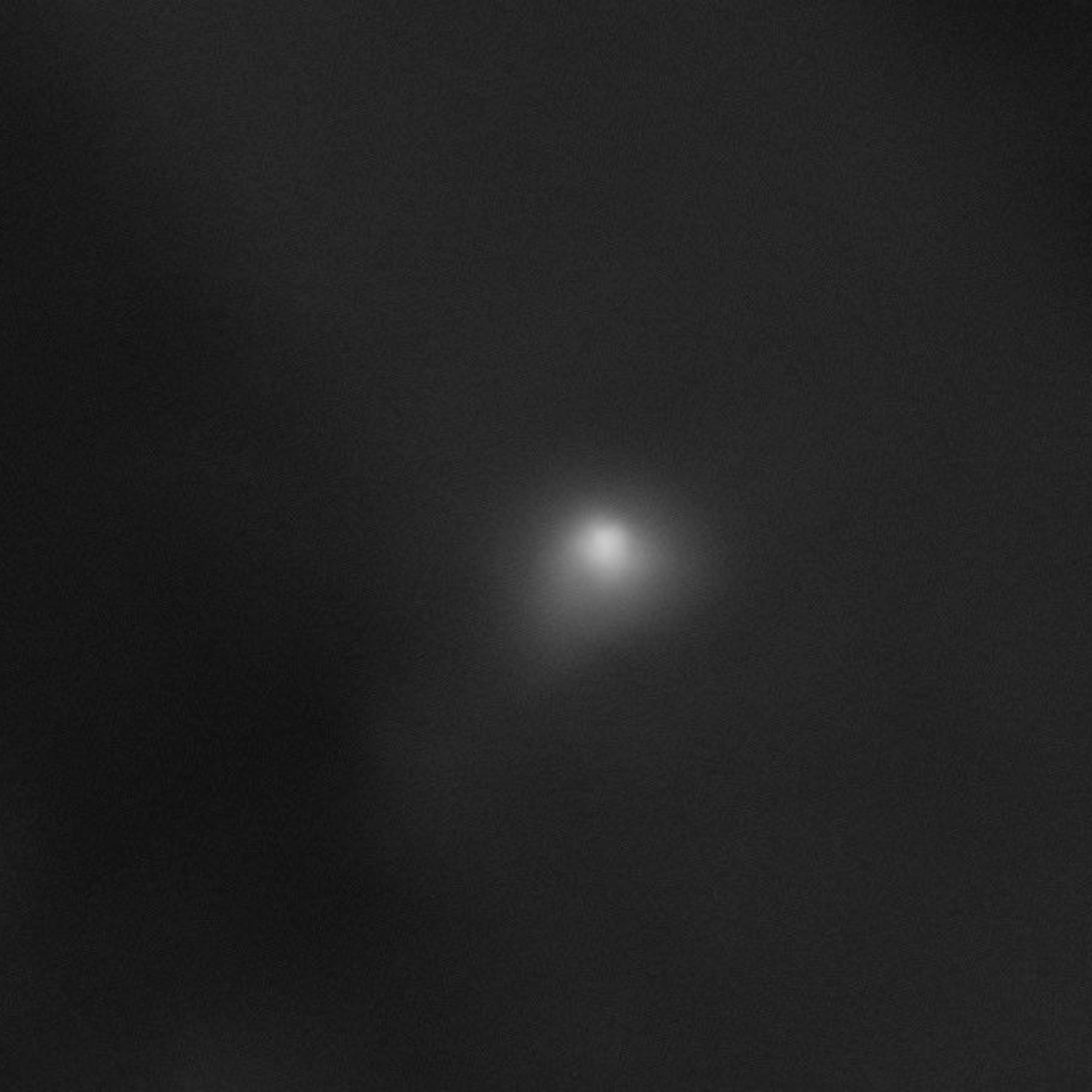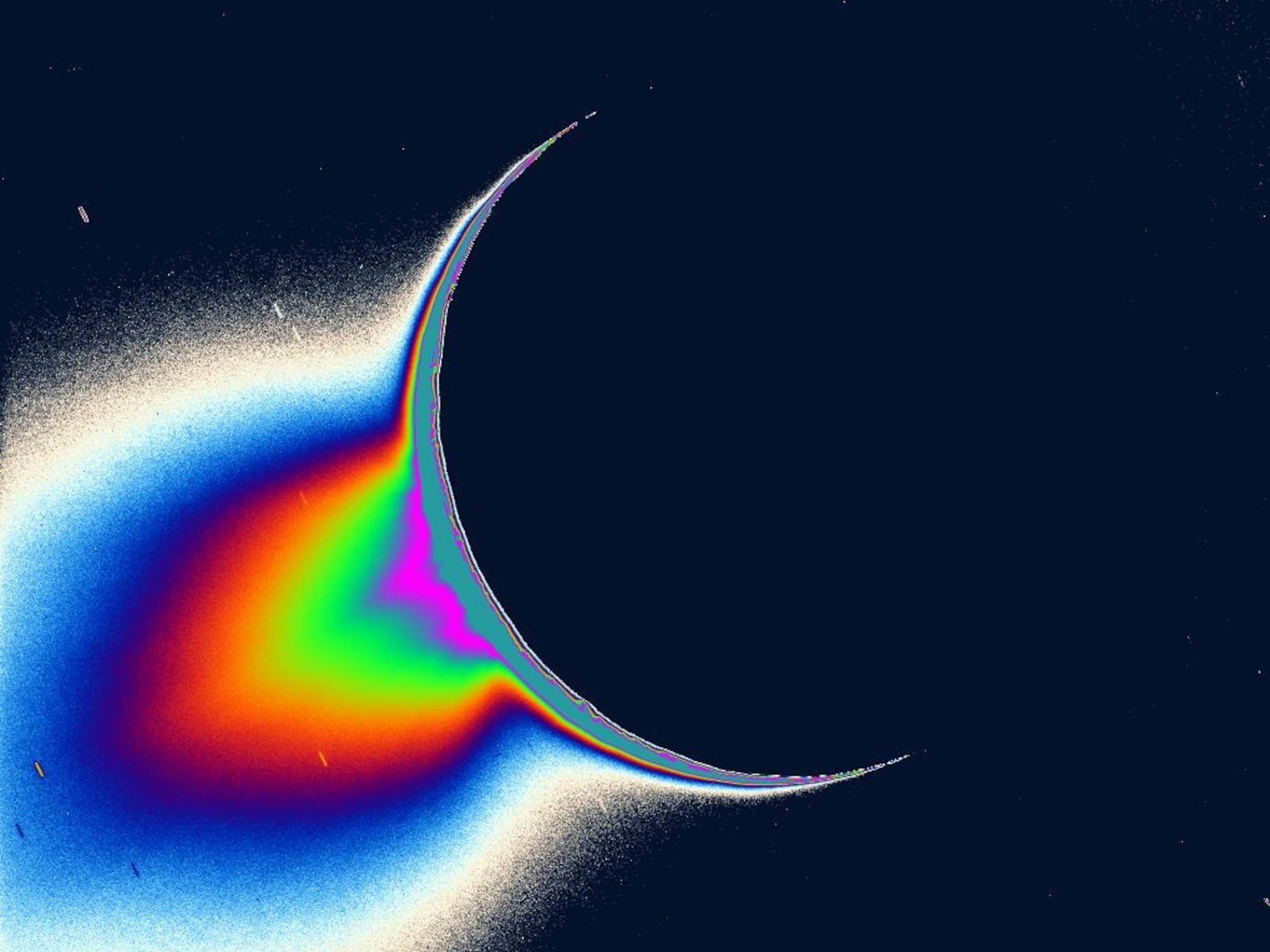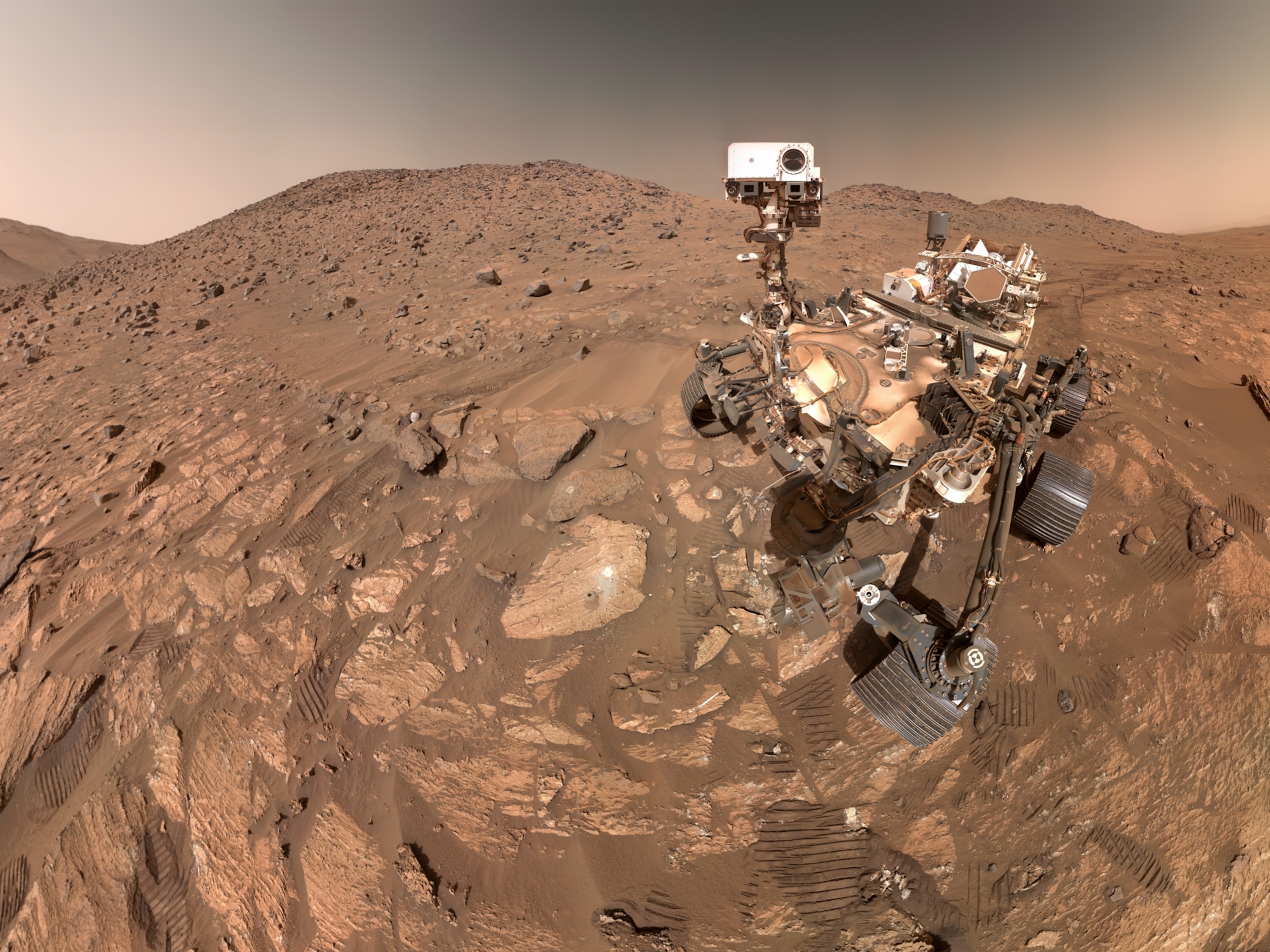
Saturn Moon Harbors Ocean, Raising Possibility of Life
Scientists have found a large body of water beneath the surface of Enceladus.
A substantial ocean most likely exists beneath the icy surface of Saturn's diminutive moon Enceladus, raising the possibility that primitive forms of extraterrestrial life exist in its briny depths.
The ocean lies between the moon's rocky core and a layer of thick ice, and is estimated to be about the size of Lake Superior. That's large for a moon that is only 310 miles (500 kilometers) in diameter and could fit within the borders of Arizona.
In our solar system, the only other moon known to have similar contact between liquid water and rock is Jupiter's Europa. Both the rock and the water are considered to be essential for the chemistry that could, over eons, turn nonliving matter into living entities.
"The main implication of our work is that there are potentially habitable environments in our solar system that are entirely unexpected," said Luciano Iess, an aerospace engineer at the Sapienza University of Rome and lead author on the study published Thursday in the journal Science.
The surface temperature on Enceladus is -180 degrees Celsius (-292 degrees Fahrenheit), but enough heat is produced by tidal forces that flex and melt the ice to create liquid water below. That the ice is heated by the effects of Saturn's gravity—the source of those tidal forces—rather than by radiation from the sun, Iess said, reinforces the theory that even distant and frigid celestial bodies might be habitable.
"This strong indication of a regional sea under the ice on Enceladus heightens our interest in Enceladus as a possible habitable world," said Carl Pilcher, former director of NASA's Astrobiology Institute.
Mapping a Moon With Gravity
Scientists were surprised in 2005 when images taken by the Cassini-Huygens mission revealed substantial jets of salty water were spitting out from the south pole of Enceladus. Later, close flybys produced dramatic photos of the geysers and the additional discovery of carbon-based, organic compounds being released from nearby darkened fissures called "tiger stripes."
Those discoveries strongly suggested there was water below the surface, but imagery alone could not confirm the liquid's presence. The scientists had to use the Cassini spacecraft in a different way, in effect turning it into a divining rod. (See "Ten Best Pictures From NASA's Cassini Probe—Saturn, More.")
During three flybys Cassini made of Enceladus between 2010 and 2012, scientists studied the moon's gravitational field in detail by measuring ever-so-slight shifts in the satellite's path. The gravitational field of a moon or planet subtly varies due to changes in the density and amount of land or liquid across its surface. The changes in that field can affect a spacecraft orbiting above.
Cassini scientists used Earth-based radio telescopes from the Deep Space Network to measure those tiny gravity-induced changes in the satellite's path, and to then indirectly map facets of the moon below.
Comparing those gravity measurements with the moon's topography allowed researchers to conclude that large amounts of liquid water were present well below the surface. Key to the research is the fact that liquid water is 7 percent more dense than ice, which means it produces a greater gravitational effect.
"To get our data, we had to detect exquisitely small changes in motion with a pretty impressive precision," said co-author David Stevenson, a planetary scientist at the California Institute of Technology in Pasadena. "That was new, but the rest of the story of how to understand masses from our data is basically Newton's laws of motion."
Stevenson said that while the team's understanding of the water on Enceladus remained "somewhat fuzzy," members were quite confident that a reservoir had been found about 25 to 30 miles (40 to 48 kilometers) below the surface. The ocean, or sea, is estimated to be in a layer about 6 miles (10 kilometers) from top to bottom, lying between ice and rock.
The team was convinced that the water was present in the south polar region—where the geysers and tiger stripes are found. However, there was not enough data to determine whether it might spread farther around the globe, Stevenson said. The ocean under the surface ice of Europa, a much larger moon, has been determined to circle its globe.
Good Place to Look for Life
Although the gravitational data painted only a very rough picture of the composition of Enceladus, the findings go a long way toward explaining some of the surprising features of the tiny and frigid moon.
In a teleconference Wednesday, several members of the team said it was increasingly plausible that the water vapor in Enceladus's geysers is coming from the subsurface ocean and up through what Stevenson called the moon's "plumbing," to the tiger stripe region on the surface.
Jonathan Lunine, a planetary scientist and astrobiologist at Cornell University in Ithaca, New York, and another member of the Cassini team, said the organic material detected earlier in the plume and around the tiger stripes increases the possibility that some form of life exists, or once existed, on Enceladus.
So too does the new finding that the moon's ocean sits on bedrock. "Like at the bottom of our oceans, liquid water would seep through the rock and pick up nutrients and get warmer," Lunine said. "This makes the interior of Enceladus an attractive potential place to look for life."
Finding that life, though, wouldn't be possible with Cassini. The spacecraft's spectrometer initially detected the organic material on the moon. However, Lunine said, a far more powerful instrument would be needed to determine if complex organics and possibly life existed in the liquid water.
Cassini has been in orbit around Saturn since 2004 and is expected to pass by Enceladus three more times before the planned end of its mission in 2017. The Cassini team hopes to navigate the spacecraft through the geyser plume during one of the flybys to get an intimate look at its composition.
"More studies of the plume material, particularly a sample return," said Pilcher, "would help us understand if life might even exist on this small moon."








